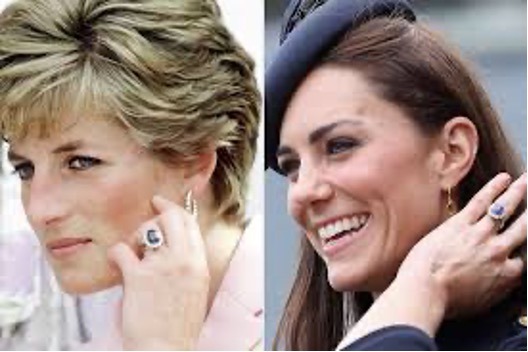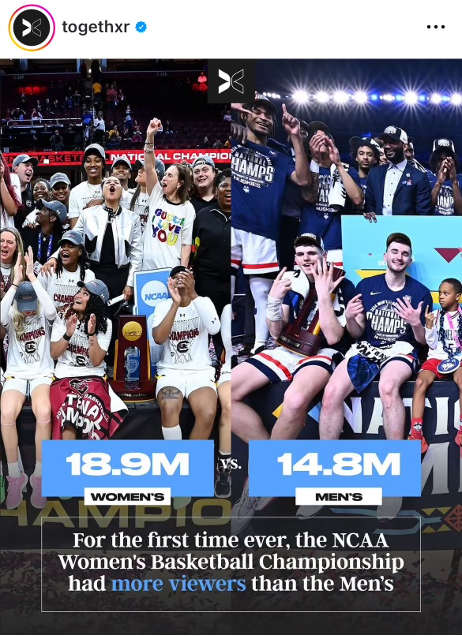Text
Informal Celebrity Brand Ambassadors – Slay or Nay?
One piece of the Burberry case that stuck out to me was how they cemented themselves as a luxury brand in the early days. Partially, “the Burberry trench coat’s iconic fashion status was strengthened through its popularity among famous actors,” including Humphrey Bogart at the 1942 1942 Academy Awards and Audrey Hepburn in her 1961 film Breakfast at Tiffany’s.

Brand ambassadors, whether official or unofficial, can help to elevate the status and promote the diffusion of a brand. This can be good or bad depending on the image you are looking for. Does seeing Audrey Hepburn in a Burberry coat make it seem more or less exclusive?
On one hand, fashion brands like DKNY and Tommy Hilfiger used to be more elitist, but now you see so many celebrities wearing them and you can find them in your local TJ Maxx or Marshalls. The over-proliferation of the brand in the public space may have backfired and made it less exclusive…though maybe this was the goal?

On the other hand, Garrard established and elevated their brand through partnering with British Royalty like Princess Diana and later informally Kate Middleton when Prince Harry proposed with his mother’s Garrard ring. The ensuing associations that consumers make with Garrard are along the lines of “royal,” and “elegant,” likely in large part due to the brand being worn by some of the most famous individuals in the country.

By associating brands with A-list celebrities, luxury companies can promote exclusivity to amplify their own premium brand positioning. Although, there is always a risk of this backfiring and making the brand seem more attainable for the general public.
Sources:
[1] https://people.com/royals/kate-middleton-princess-diana-engagement-ring-same-size/
[2] https://www.ocregister.com/2012/05/04/gucci-and-other-designer-brands-at-oc-tj-maxx/
[3] https://www.cover-magazin.com/cover-burberry-audrey-hepburn-breakfast-at-tiffanys/
#mitsloanbranding2024a#brand ambassador#audrey hepburn#burberry#garrard#princess diana#kate middleton
2 notes
·
View notes
Text
Caitlin Clark, LA Sparks, WNBA Diffusion To Reach New Marks
Viewership for Women’s NCAA March Madness Basketball SOARED this year with 18.9M Viewers watching the Women’s Championship. This stat not only topped Men’s viewership of 14.8M, but also made this the most streamed basketball game (including pro, women’s, and men’s) since 2019! Women's basketball has been riding a wave of increasing popularity and demand, fueled by heightened media attention. This surge in interest is sparking newfound enthusiasm for the WNBA, a historically under-watched professional sports league in an untapped market. For context, the WNBA revenue in 2016 was $60M versus NBA revenue of $10B. The WNBA has lower attendance on average than the NBA with 5.7k fans versus 17.2k fans per game, respectively.

One glaring issue the WNBA will face this upcoming season (which starts quite soon!) is the disparity between forecasted demand and game schedules. While college women's games often struggle to secure prime-time slots for airing, WNBA games similarly take place in non-peak arenas or during off-peak hours, limiting accessibility for fans. This mismatch between demand and scheduling poses a significant hurdle for the WNBA as it should seek to capitalize on the growing interest in women's basketball. However, forecasting the adoption of a product (WNBA tickets) is tricky, especially given it seems that many viewers are watching because others are watching, making them “imitators,” a term coined by Frank Bass (see “Forecasting the Adoption of a New Product” article).
Caitlin Clark, the star of the Iowa team, has broken countless records this year as a senior and was recently drafted to the Indiana Sparks as the WNBA’s #1 Pick. Recently, the Washington Mystics made a strategic move by rescheduling their game against the Indiana Fever (Clark’s Team). Originally slated for a Wednesday afternoon slot, the game was shifted to a Friday evening and moved to a top-tier sports arena, likely prompted by anticipated higher demand for the WNBA in general, but also for the Clark game.

The success of the WNBA hinges not only on accurately predicting demand to optimize things like game scheduling but also on cultivating a vibrant fan experience to keep fans once they come watch a WNBA game to see their favorite star player. Many fans are drawn to women’s basketball for the iconic players like Clark, Reese, Brink, Watkins, and Bueckers, but investing in fan engagement initiatives will be supremely important in solidifying the WNBA’s connection with its audience and fostering long-term loyalty and demand. How can the WNBA forecast demand accurately, build upon the momentum created by the NCAA Tournament and the star players, and ultimately capture more revenue?
Sources:
[1] https://www.npr.org/2024/04/10/1243801501/womens-ncaa-championship-tv-ratings
[2] https://www.wsn.com/nba/nba-vs-wnba/
[3] NBA Washington Instagram.
[4] TOGETHERXR Instagram.
#MITSloanBranding2024A #WNBA #WomensBasketball #CaitlinClark
1 note
·
View note
Text
This ain’t Texas (ooh) – Ain’t no LITTERING (hey)
Nudge by Richard Thaler and Cass Sunstein is one of my favorite books as a nerdy girl that loves behavioral econ. The one anecdote that really stuck out to me (that I tell other people about, including my family members in Dallas) discusses the origins of Texas’ slogan: Don’t Mess With Texas.

The book dives into how the slogan was really a nudging campaign to get people to stop littering on the highway by appealing to the masculine, cowboy, redneck highway billboard viewer to get them to read the billboard, resonate with it, and translate it to an action of not littering on the highway. This really exemplifies the power of nudges and the importance of catering your nudge to your target audience (along with the funny benefit of doing so in a subtle manner).
Photo Sources:
[1] https://pitchfork.com/reviews/tracks/beyonce-texas-hold-em/
[2] https://www.nbcnews.com/id/wbna5151681
2 notes
·
View notes
Text
Love Is A Journey AND SO ARE DATING APPS
Hinge is an online dating app with the tagline: “The dating app designed to be deleted.” Compared to its competitors’ branding (e.g., Tinder’s “Swipe Right,” Bumble’s “Date, Meet, Network Better,” and Match’s “Start Something Real”), Hinge is explicit about having the goal of a one-time, as-short-as-possible customer journey. But how is that a good product strategy if the customer journey is designed to be as short as possible?
The Hinge customer journey includes ample marketing (social media ads, billboards, radio commercials I’m sure…, word of mouth), which are designed to lead a customer to download the app and then start sending out “likes” and conversing with prospects. When users find a suitable match and are ready to end their dating journey, they simply delete the app (or don’t??) and end their customer journey for good (unless they return?). I am curious about the Hinge algorithm (i.e., the way that they decide which profiles are presented and/or promoted towards which people) and if this algorithm considers the number of times you have previously downloaded Hinge.
Richardson notes in his article in HBR titled “Using Customer Journey Maps to Improve Customer Experience” that “[t]he more touchpoints you have [with the customer], the more complicated…[the customer journey] map becomes.” Hinge seems to be attempting to limit touchpoints so that customers can find a long-term dating and/or life partner, delete the app, and not return. Perhaps their tagline signals to customers that Hinge is not trying to scam users, but is truly invested in successful outcomes? They do promote successful couples with their marketing. Hinge also seems to signal this commitment to dating success by only offering a limited daily number of “likes” that each user can deal out, which forces users to be choosy or pay for more. If Hinge was truly living its mission summarized by me as date, delete, and done then they wouldn’t be as profitable as I suspect they are. But hey, I met my SO on Hinge so can’t complain!

Sources:
[1] “Dating App Taglines: The Good, The Bad and The Cringy,” https://medium.com/@emafulgacopywriter/dating-app-taglines-the-good-the-bad-and-the-cringy-d0a2a42de7b6.
[2] “Using Customer Journey Maps to Improve Customer Experience,” see Canvas.
[3] Photo: https://appscrip.com/blog/top-dating-apps-in-san-diego-for-businesses/
2 notes
·
View notes